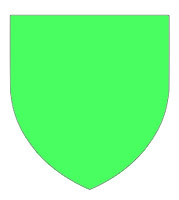| Professors of Natural Philosophy at the Universities of Aberdeen |
David Thomson 17 Nov 1817 - 31st Jan 1880David Thomson survived the fusion of the two Universities in Aberdeen with his job intact. He still had the commanding air of a man who knew what he was doing and knew how to do it, though the post of Sub-Principal had disappeared. His teaching was conducted in the manner of a benevolent dictator. It was unwise for students to cross him, for they would in the first instance be subject to his biting sarcasm. Class discipline was not an issue. That said, he was amazingly effective and it was said 'his lectures were unrivalled as models of exposition'. Four of his students in one decade went on to Cambridge and became Senior Wranglers, the highest of the high academic attainments. The first of these, George Slessor, was a product of Thomson's King's College days. In Thomson's early years as assistant at the University of Glasgow he had taught William Thomson, later to become Lord Kelvin. At Aberdeen he taught Charles Niven, who would become Thomson's own successor. His biography was written by one of his pupils who became Canon of Cumbrae so it was not only would-be natural philosophers who appreciated 'Davie'. The Thomson Memorial Trust presented the University with a bust by John Hutchison RSA, now hidden in a University store with its nose damaged. On the other hand, maybe it was also an alumnus who penned the verse Here lies auld Dauvit, that damn'd ass/ Who taught for years the Tertian class./ When here he cracked full many a joke,/ Doon there he steers mid fire and smoke./ Abiit, evasit, evolavit./ Thank God we've seen the last o' Dauvit. One can't please everyone. 'Auld Dauvit' is buried in St Machar's churchyard, along with five of his children who died in infancy and other family members. David Thomson is also remembered for two extra-curriucular activities. He became very friendly with local watchmaker David Gill and they took the Cromwell Tower observatory at King's College out of mothballs, purchased in 1863 a decent telescope with mechanical drive, which they set up for astronomy. This was Gill's introduction to telescopic astronomy and he was hooked. A decade later he was Director of the Dunecht Observatory; a decade after that he was already well established as Her Majesty's Astronomer at the Cape of Good Hope, one of the premier astronomical posts in the English-speaking world. Gill and Thomson introduced public time to Aberdeen. Gill bought a master clock to the observatory and they converted the King's tower clock to a Bain's slave pendulum, controlled by an electrical signal taken across the quadrangle by wires. They then extended the overhead wiring all the way to the centre of Aberdeen, installing a slave clock at Marischal College and one at Gill's shop at 78 Union Street. By the mid-1860s, the citizens of Aberdeen were given accurate public time; the citizens of London had only the 1 O'clock time-ball at the Greenwich Observatory as a standard of time. Thomson was also instrumental in fitting out the Cromwell Tower observatory as a national meteorological observatory in 1868, establishing it as one of 7 stations on the first UK national weather network that telegraphed daily readings back to the Kew Observatory. The observatory was staffed for the next 75 years and in the 20th century became famous for the cloud pictures taken from the roof by George Aubourne Clarke. The account of Thomson in the Dictionary of National Biography draws heavily on Lows' biography of Thomson referenced in the previous piece on Thomson but fails to mention any of these initiatives. For more on the Cromwell Tower, see the brief account of its history. |

David Thomson around 1875, from a photograph by G W Wilson |
|
Page by John S. Reid Dec. 2017 |


